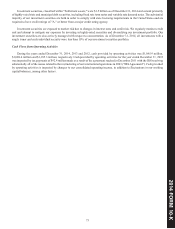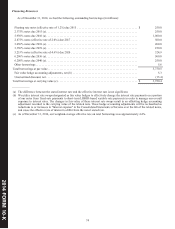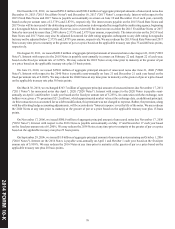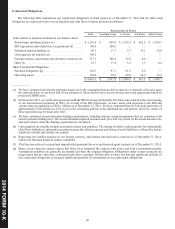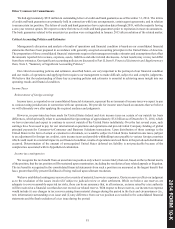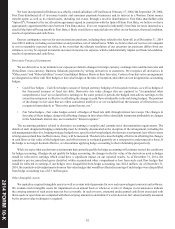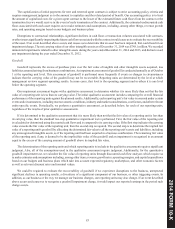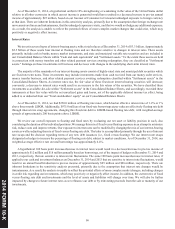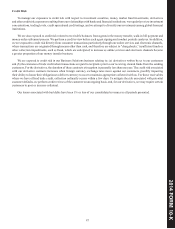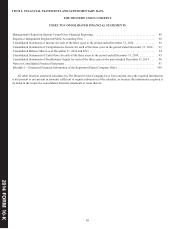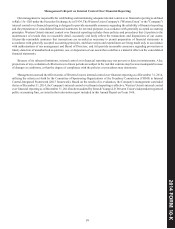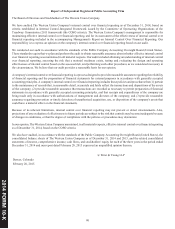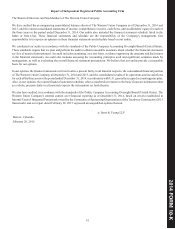Western Union 2014 Annual Report Download - page 219
Download and view the complete annual report
Please find page 219 of the 2014 Western Union annual report below. You can navigate through the pages in the report by either clicking on the pages listed below, or by using the keyword search tool below to find specific information within the annual report.
2014 FORM 10-K
81
Other Commercial Commitments
We had approximately $210 million in outstanding letters of credit and bank guarantees as of December 31, 2014. The letters
of credit and bank guarantees are primarily held in connection with lease arrangements, certain agent agreements, and in relation
to an uncertain tax position. The letters of credit and bank guarantees have expiration dates through 2018, with the majority having
a one-year renewal option. We expect to renew the letters of credit and bank guarantees prior to expiration in most circumstances.
The bank guarantees related to the uncertain tax position were extinguished in January 2015 after resolution of the related matter.
Critical Accounting Policies and Estimates
Management's discussion and analysis of results of operations and financial condition is based on our consolidated financial
statements that have been prepared in accordance with generally accepted accounting principles in the United States of America.
The preparation of these consolidated financial statements requires that management make estimates and assumptions that affect
the amounts reported for revenues, expenses, assets, liabilities and other related disclosures. Actual results may or may not differ
from these estimates. Our significant accounting policies are discussed in Part II, Item 8, Financial Statements and Supplementary
Data, Note 2, "Summary of Significant Accounting Policies."
Our critical accounting policies and estimates, described below, are very important to the portrayal of our financial condition
and our results of operations and applying them requires our management to make difficult, subjective and complex judgments.
We believe that the understanding of these key accounting policies and estimates is essential in achieving more insight into our
operating results and financial condition.
Income Taxes
Reinvestment of foreign earnings
Income taxes, as reported in our consolidated financial statements, represent the net amount of income taxes we expect to pay
to various taxing jurisdictions in connection with our operations. We provide for income taxes based on amounts that we believe
we will ultimately owe after applying the required analyses and judgments.
However, no provision has been made for United States federal and state income taxes on certain of our outside tax basis
differences, which primarily relate to accumulated foreign earnings of approximately $5.6 billion as of December 31, 2014, which
we have reinvested and expect to continue to reinvest outside of the United States indefinitely. Over the last several years, such
earnings have been used to pay for our international acquisitions and operations and provide initial Company funding of global
principal payouts for Consumer-to-Consumer and Business Solutions transactions. Upon distribution of those earnings to the
United States in the form of actual or constructive dividends, we would be subject to United States federal income taxes (subject
to an adjustment for foreign tax credits), state income taxes and possible withholding taxes payable to various foreign countries
which could result in a material impact to our financial condition, results of operations and cash flows in the period such distribution
occurred. Determination of the amount of unrecognized United States deferred tax liability is not practicable because of the
complexities associated with its hypothetical calculation.
Income tax contingencies
We recognize the tax benefit from an uncertain tax position only when it is more likely than not, based on the technical merits
of the position, that the tax position will be sustained upon examination, including the resolution of any related appeals or litigation.
The tax benefits recognized in the consolidated financial statements from such a position are measured as the largest benefit that
has a greater than fifty percent likelihood of being realized upon ultimate resolution.
We have established contingency reserves for a variety of material, known tax exposures. Our tax reserves reflect our judgment
as to the resolution of the issues involved if subject to judicial review or other settlement. While we believe our reserves are
adequate to cover reasonably expected tax risks, there can be no assurance that, in all instances, an issue raised by a tax authority
will be resolved at a financial cost that does not exceed our related reserve. With respect to these reserves, our income tax expense
would include (i) any changes in tax reserves arising from material changes during the period in the facts and circumstances (i.e.,
new information) surrounding a tax issue and (ii) any difference from our tax position as recorded in the consolidated financial
statements and the final resolution of a tax issue during the period.




